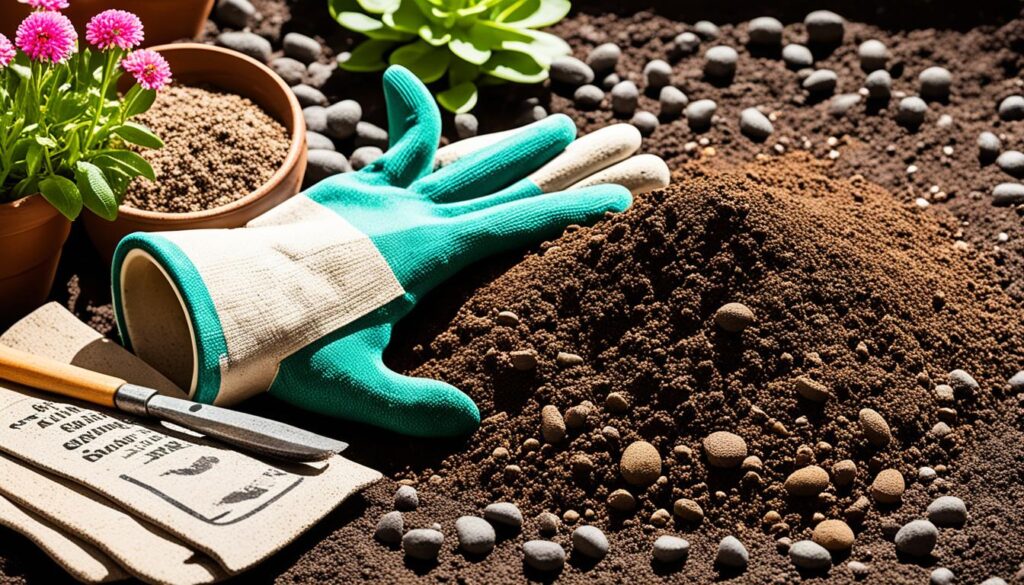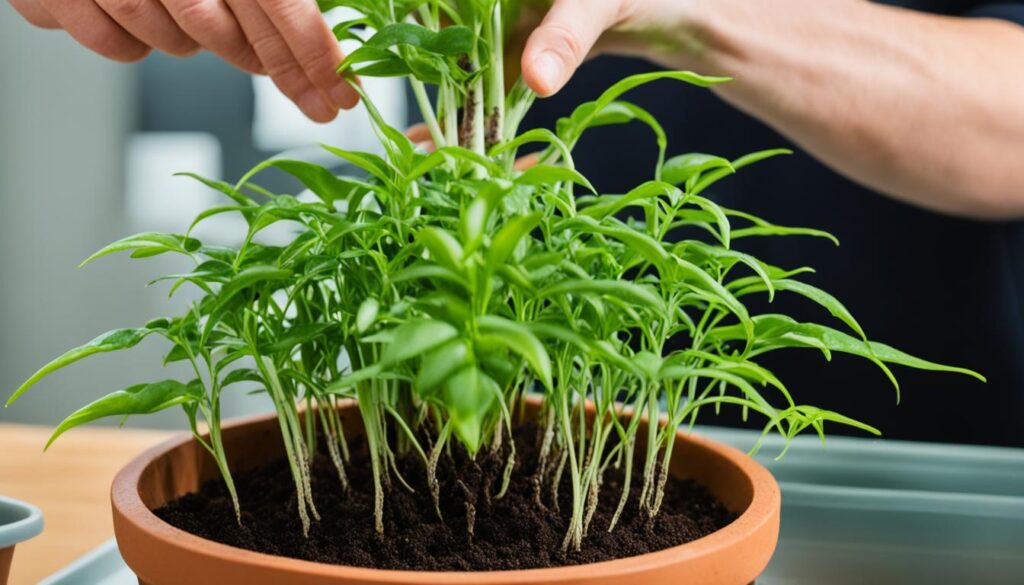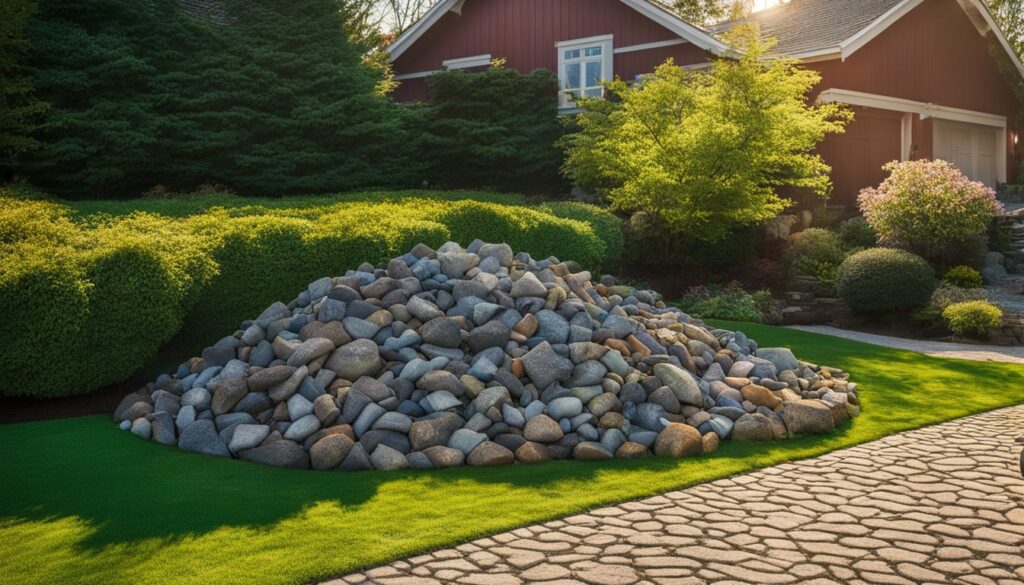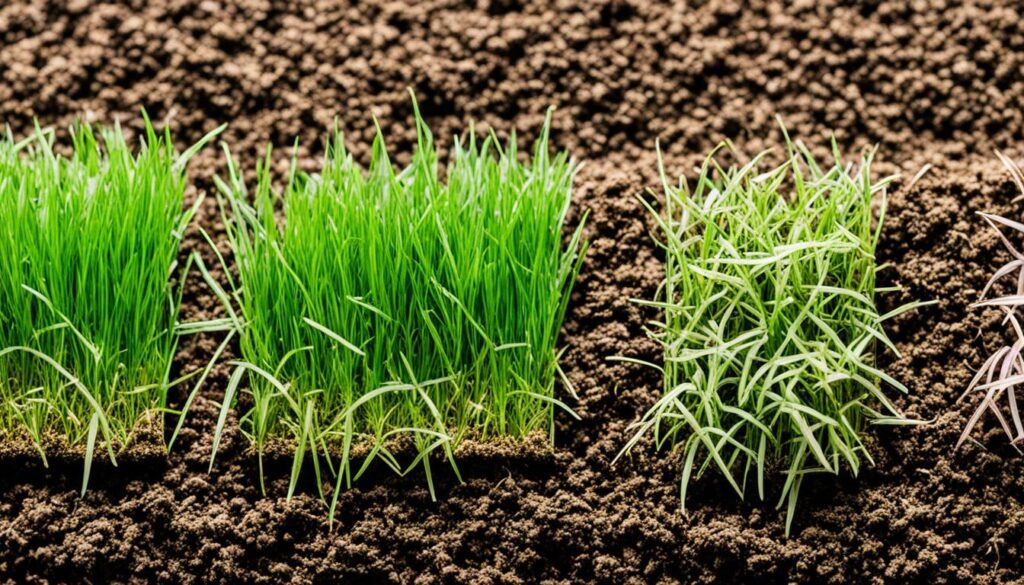Did you know most houseplants do best in soil with a pH between 6.0 and 7.0? This fact shows how vital it is to understand indoor plants’ soil needs. They’re different from outdoor garden soil. Choosing the right potting mix is key to keeping your indoor plants healthy and happy.
Plants, like us, have their own needs. Knowing what they need, like water, light, and temperature, is important. Also, picking the best soil for your houseplant is crucial. Don’t just grab the “all-purpose soil blend” without thinking. The right soil can make your plant and you happier. This article will explain the different soils and what makes a good potting mix for indoor plants. So, you’ll know what to look for at the garden center or how to make your own.
Key Takeaways
- Most houseplants thrive in a slightly acidic to neutral soil pH range of 6.0 to 7.0.
- Outdoor garden soil is often unsuitable for indoor plants, which have different soil requirements.
- Choosing the right potting mix is crucial for the long-term health and happiness of your indoor plants.
- Well-draining and aerated soil is essential to prevent root rot and other issues.
- Understanding the unique needs of your indoor plants can help you select the best soil blend for their growth.
Understanding Potting Soil Requirements for Indoor Plants
Choosing the right potting soil is key for your indoor plants’ health and growth. Indoor potting mixes are made differently than outdoor soil. They are lighter, more porous, and drain better, perfect for houseplants in small spaces.
Differences Between Outdoor Garden Soil and Indoor Potting Mix
Outdoor garden soil is dense and heavy, which can cause root rot in indoor plants. Indoor potting mix uses ingredients like peat moss, coco coir, worm castings, perlite, and more. These materials give the right aeration, drainage, and nutrients for houseplants.
Why Regular Soil is Unsuitable for Houseplants
Regular garden soil can cause problems for indoor plants, like soil compaction and poor drainage. Houseplants need a special soil mix that holds moisture, drains well, and gives the right nutrients.
| Indoor Potting Mix | Outdoor Garden Soil |
|---|---|
| Lightweight and soilless | Dense and heavy |
| Porous, aerated, and well-draining | Water-retaining and prone to compaction |
| Nutrient-rich with added amendments | May lack necessary nutrients for indoor plants |
Knowing the differences between indoor potting mix and outdoor garden soil is key for your houseplants’ health and success. Choosing the right soil means giving your plants the best conditions to grow.
Types of Potting Mixes for Indoor Plants
Choosing the right potting mix is key for healthy indoor plants. There are many potting mixes for different plants. From cactus and succulent mixes to general mixes, knowing the differences helps pick the best for your plants.
Cactus and Succulent Mix
Cactus and succulent plants need soil that drains well to prevent root rot. These mixes have peat moss, perlite, or pumice, and sand. These ingredients ensure good drainage and air around the roots, just like these plants prefer.
Potting Soil vs. Potting Mix
It’s key to know the difference between potting soil and mix. Potting soil is dense and not great for houseplants because it includes real garden soil. Potting mix is made for plants in pots. It uses peat moss, vermiculite, and coconut fiber for better air and water flow, which is important for indoor plants.
| Potting Soil | Potting Mix |
|---|---|
| Contains actual soil | Soil-less blend |
| Denser texture | Lighter, more airy texture |
| Less suitable for indoor plants | Optimized for container gardening |
“Potting mix is designed to provide the perfect balance of air, water, and nutrients for plants in containers, while potting soil is better suited for direct planting in the ground.”
The Ideal Potting Mix Composition for Indoor Plants
Finding the perfect potting mix for indoor plants means balancing key ingredients. A great mix includes peat moss, coconut fiber, vermiculite, and perlite. These elements work together to support healthy growth.
Peat moss is key for keeping moisture in and controlling soil pH, keeping it between 6.0 to 7.0. Coconut fiber is a green choice that also holds water well and doesn’t compact easily.
Vermiculite and perlite are crucial too. Vermiculite helps with moisture and air flow. Perlite ensures good drainage and air movement, helping roots grow strong. The right mix of these depends on the plant type, with more perlite needed for dry-loving plants like cacti and succulents.
Pre-mixed potting mixes are great for indoor plants and often include these organic parts. Outdoor garden soil is too heavy and holds too much water, which can harm indoor plants and cause root rot.
Knowing the best potting mix composition helps your indoor plants do well. It gives them the right mix of moisture, air, and nutrients they need.
Importance of Soil pH for Healthy Plant Growth
The success of your indoor plants depends a lot on the soil pH level. Soil pH affects how plants get and use essential nutrients. Most houseplants do best in soil with a pH between 6.0 and 7.0.
The pH scale goes from 0 to 14, with 7 being neutral. Most soils fall between 3 (very acidic) and 10 (very alkaline). If the soil pH is off, plants can’t get the nutrients they need, even with regular fertilizing.
Some plants like blueberries and azaleas need acidic soil, with a pH of 4.5 to 5.5. Others, like pin oak and hydrangeas, do well in a pH of 5.5 to 6.5. It’s key to check and adjust the soil pH to help plants grow and absorb nutrients well.
| Soil pH Range | Nutrient Availability |
|---|---|
| Below 6.0 (Acidic) | Nitrogen, phosphorus, potassium, calcium, and magnesium become less available to plants. |
| 6.0 to 7.0 (Neutral) | Nutrients are most readily available to plants, allowing for optimal growth and health. |
| Above 7.0 (Alkaline) | Iron, manganese, boron, copper, and zinc become less accessible to plants. |
To change the soil pH, you can use limestone or sulfur. Limestone makes acidic soil better for plants. Sulfur lowers the pH of alkaline soil. Testing and adjusting the soil pH often is key to keeping your plants healthy.

“Maintaining the proper soil pH is crucial for the overall health and growth of your indoor plants. By understanding and adjusting the pH levels, you can ensure your plants have access to the essential nutrients they need to thrive.”
Can You Use Garden Soil for Indoor Plants?
Choosing the right soil for your indoor plants is key. Garden soil might seem like an easy choice, but it’s not the best for indoor plants. It can cause problems for your houseplants.
Garden soil is heavy and holds a lot of water, unlike the light, draining potting mixes indoor plants need. Using garden soil can cause soil compaction, bad drainage, and lack of nutrients. This can hurt your indoor plants by making them grow poorly, causing root rot, and more.
Potting mixes made for indoor plants are a better choice. They have things like peat moss, perlite, and vermiculite for great aeration, drainage, and nutrients. These mixes are made just for indoor plants, helping them grow well.
| Outdoor Garden Soil | Indoor Potting Mix |
|---|---|
| Denser and more water-retentive | Lightweight and well-draining |
| Can lead to soil compaction and poor drainage | Formulated with ingredients like peat moss, perlite, and vermiculite for optimal aeration and nutrient availability |
| Not suitable for indoor plants | Specifically designed for the unique needs of indoor plants |
Don’t use your outdoor garden soil for indoor plants. It’s not a good idea. A quality potting mix made for indoor use is better. It gives your houseplants the best conditions to grow.
Potting Mix Ingredients for Optimal Aeration and Drainage
Creating the perfect potting mix for indoor plants is key. Essential ingredients like perlite and vermiculite are crucial. They help with aeration and drainage.
Perlite and Vermiculite
Perlite and vermiculite are minerals that improve your potting mix. Perlite stops soil from getting too dense. Vermiculite keeps water in the soil, so plants get enough moisture.
Bark Additives: Orchid Bark and Fir Bark
Adding orchid bark and fir bark also helps. They improve aeration and water retention. This creates a great place for roots to grow.

By picking and mixing these ingredients, you make a potting mix that drains well and is full of nutrients. The right mix is key for your houseplants’ health and growth.
Specialty Mixes: Epiphyte and Succulent Blends
Some indoor plants need special soil blends to grow well. Epiphytes, like orchids and bromeliads, and succulents do best with custom potting mixes. These mixes meet their special soil and drainage needs.
Creating an Epiphyte Potting Mix
Epiphytes grow on other plants in the wild. They like a mix that drains well and feels chunky, like their natural home. A good mix for epiphytes has coco coir, fir bark, and perlite. You can add sphagnum moss for extra moisture.
This mix gives epiphytes the air and water they need. It also holds moisture well.
| Ingredient | Function |
|---|---|
| Coco coir | Provides a soilless, well-draining base |
| Fir bark | Adds coarse texture and improves aeration |
| Perlite | Enhances drainage and prevents soil compaction |
| Sphagnum moss | Retains moisture for moisture-loving epiphytes |
Customizing the potting medium for your epiphyte plants helps them do well indoors.
Plant Watering and Soil Moisture Requirements
Proper watering is key to keeping your indoor plants healthy. Each plant needs different amounts of water, based on its size, light, temperature, and growth rate. Most plants like their soil to be moist but not soaked. Succulents and cacti, however, need a good soaking and then a dry spell.
Too much water can cause root rot, while too little can make plants wilt and grow slowly. It’s important to check the soil moisture and adjust your watering. This can make the difference between a healthy and a struggling plant.
| Plant Type | Ideal Soil Moisture | Watering Frequency |
|---|---|---|
| Foliage Plants | Consistently moist | 1-2 times per week |
| Succulents and Cacti | Completely dry between waterings | Every 2-3 weeks |
To keep the soil right, check it often with your finger. Water when the top inch feels dry. But don’t let it get too dry, as this can cause root rot. And don’t overwater, as that can harm your plants too.
“The key to healthy indoor plants is finding the right balance between plant watering and soil moisture levels. Neglecting this can lead to issues like overwatering or underwatering, which can be detrimental to your plants’ well-being.”
By knowing what your plants need in terms of soil moisture and watering, you can help them thrive. This will make your indoor space happier and more beautiful.
Conclusion: Choosing the Right Potting Mix for Your Indoor Plants
Choosing the right potting mix is key for your indoor plants to do well. By opting for a lightweight, well-draining mix, you make sure your plants get the right aeration, nutrient content, and moisture retention. This supports healthy roots and overall plant health.
Knowing about the different potting mixes and their ingredients, like perlite, vermiculite, bark additives, and other soil amendments, helps you pick the best soil for your plants. Whether you have succulents, epiphytes, or African violets, or general indoor plants, the right soil composition is key for a healthy indoor garden.
This article gives you the knowledge to make smart choices about potting mix selection and indoor plant care. You’ll know how important soil aeration, drainage, and nutrient balance are. With this knowledge, you can create a lush and vibrant indoor oasis that adds beauty and joy to your home.
FAQ
Can you use garden soil for indoor plants?
No, garden soil is not good for indoor plants. It’s too heavy and holds too much water. Indoor plants need light, airy mixes that drain well. Using garden soil can cause problems like soil compaction and poor drainage.
What is the difference between outdoor garden soil and indoor potting mix?
Outdoor garden soil is dense and holds a lot of water, which can rot indoor plant roots. Indoor potting soil is made from materials like peat moss and perlite. These materials help indoor plants get the air, water, and nutrients they need.
What are the different types of potting mixes for indoor plants?
There are many potting mixes for indoor plants. Cactus and succulent mixes have peat moss and perlite for good drainage. Potting soil is denser and not great for houseplants. Potting mix is for plants in containers and has peat moss and vermiculite for better air and water flow.
What makes a good indoor potting mix?
A good indoor potting mix has peat moss and other materials like coconut fiber and vermiculite. These help with water, air, and drainage. It should also have the right pH level, between 6.0 and 7.0, for most indoor plants.
Why is soil pH important for indoor plants?
Soil pH affects how plants get nutrients. If the pH is off, plants can’t get what they need, even with fertilizer. Most houseplants do best in a pH between 6.0 and 7.0.
What ingredients should a good potting mix for indoor plants include?
A good mix should have perlite, vermiculite, and bark for aeration and drainage. These materials prevent soil compaction and help with water and air flow. They create a healthy space for roots to grow.
Do certain indoor plants require specialized potting mixes?
Yes, some plants like epiphytes and succulents need special mixes. Epiphytes need a mix that drains well and feels like their natural home. Succulents and cacti do well in mixes that drain fast to prevent rot.



